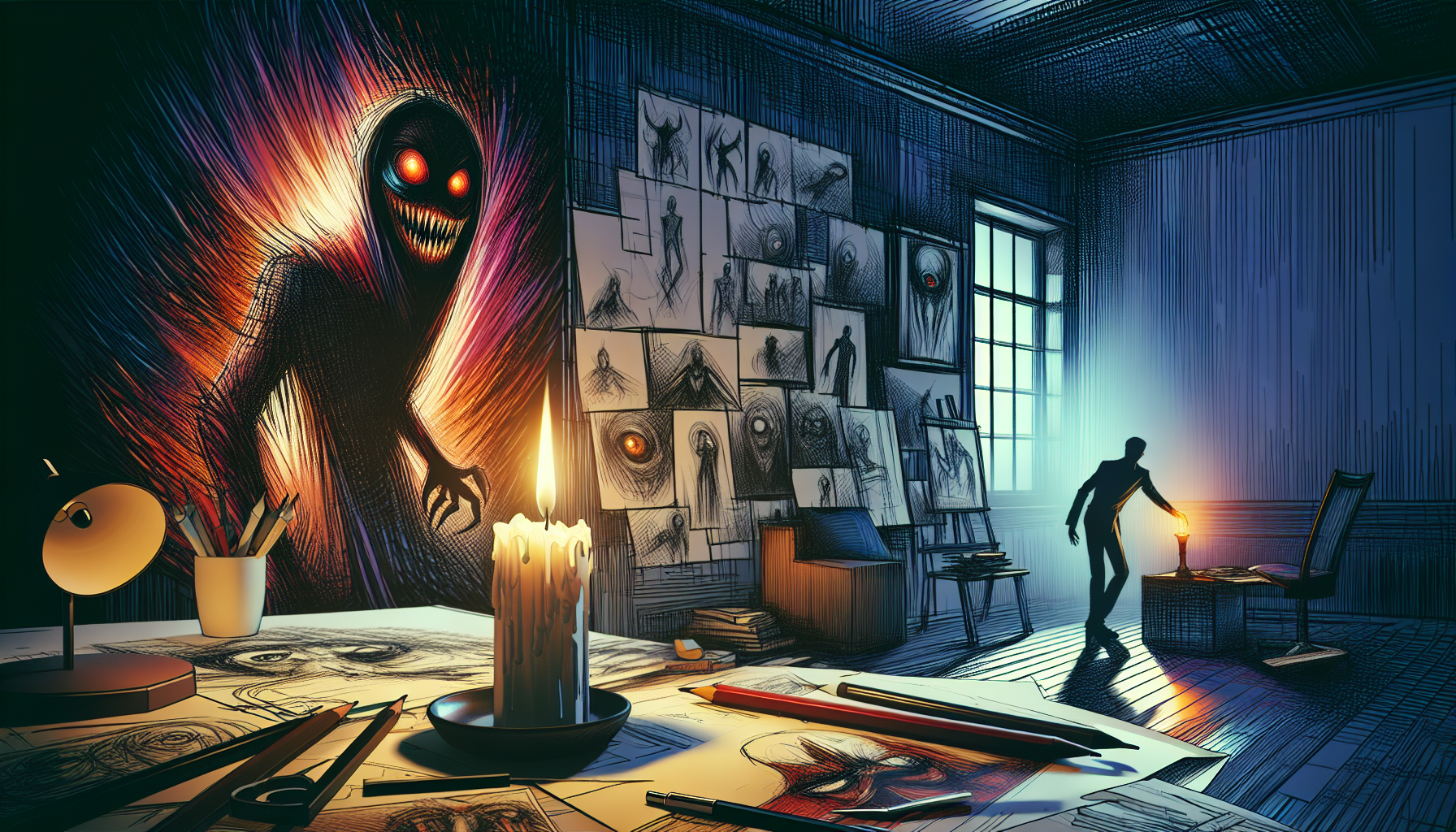- Home
- Screenwriting
- Crafting Unforgettable Horror Villains: Tips for Writing Terrifying Antagonists

Step Right Up: The Dark Art of Crafting Unforgettable Horror Villains
Imagine you’re walking down a dimly lit corridor, each step echoing ominously. Suddenly, you sense a presence. Something malevolent, something terrifying. You turn, only to meet the eyes of… Well, that’s the question, isn’t it? Who—or what—is stalking you from the shadows? The answer, dear writer, lies in the twisted recesses of your imagination, waiting to be unleashed. Crafting a horror villain is no small feat. It requires a delicate balance of fear, fascination, and, dare we say, a touch of fiendish charm. Let’s embark on a spine-chilling journey to conjure the horror antagonist of your nightmares—or your reader’s, anyway.
1. The Genesis of Terror: Origin Story Is Key
The most memorable villains have backstories that are as compelling as they are disturbing. A great origin story does more than explain why your villain turned to the dark side; it adds layers of complexity, making your antagonist a figure of both fear and, occasionally, sympathy. Did they make a malevolent transformation from Dr. Jekyll into Mr. Hyde, or were they always lurking in the metaphorical basement, biding their time? Whether it’s a tragic past or a fateful misstep into the occult, your villain’s origin should whisper (or scream) volumes about their motives.
2. Beyond the Boogeyman: Crafting a Unique Menace
Let’s face it: the market is flooded with vampires who sparkle and zombies with existential crises. Your mission, should you choose to accept it, is to breathe fresh life into the half-dead lungs of clichés. Consider merging unexpected elements that shouldn’t go together but horrifyingly do. Imagine a villain who’s like a kindergarten teacher by day and a ruthless cult leader by night. The incongruity is what makes it unsettling, tapping into fundamental fears of trust betrayed.
3. The Devil’s in the Details: Appearance and Attributes
If looks could kill, your horror villain would leave a trail of petrified bodies. Think beyond the standard-issue cloaks and fangs. What unnerving physical qualities set your antagonist apart? Perhaps it’s the absence of something ordinary, like a reflection or shadow, that makes skin crawl. Or maybe they have an all-too-captivating gaze that lures victims to their doom. Remember, the devil—or whatever unspeakable horror you prefer—is in the details. These attributes should serve as eerie indicators of your villain’s true nature.
4. Silence Is Golden, Screams Are Platinum: Mastering the Art of Presence
A truly terrifying villain knows that less is often more. Their presence can be felt in a whisper of cold air, a fleeting shadow, or a feeling of dread that settles in the pit of a character’s stomach. Learn the art of restraint. Allow your villain to hover at the edges of your story, building tension and anticipation. When they finally step into the light, it will be a moment your readers won’t soon forget—provided they can stop screaming long enough to appreciate it.
5. A Symphony of Horrors: The Sound of Evil
What’s the sound of your villain walking through a deserted hospital ward? Is it the scrape of a blade or the unnerving tap of a cane? Audio cues can significantly amplify fear, transforming an already terrifying antagonist into a figure of nightmare-fueled legend. Even the absence of sound, a sudden, suffocating silence, can be wielded like a weapon, making the eventual “boo!” all the more effective. Experiment with auditory elements to elevate your villain from merely menacing to memorably malevolent.
6. Psychology Is Scarier Than a Bathtub of Blood
Last but certainly not least, the psychological depth of your villain can turn a standard scare into a deeply disturbing experience. Dive into the twisted psyche of your antagonist. What makes them tick? More importantly, what makes them tick off? A complex villain, capable of human emotion yet devoid of empathy, can unsettle the reader on a fundamentally personal level. It’s the idea that they might understand us, but we could never comprehend them, that truly terrifies.
Embarking on the journey to create a horror villain is not for the faint of heart. It requires delving into the depths of human fear and crafting a character who embodies those terrors. Yet, remember, in the land of horror, the rules are there to be broken, experimented with, and even mocked. So go forth, summon your inner demon, and create a villain that will haunt your readers’ dreams. After all, what are nightmares but the ultimate compliment to a horror writer?






